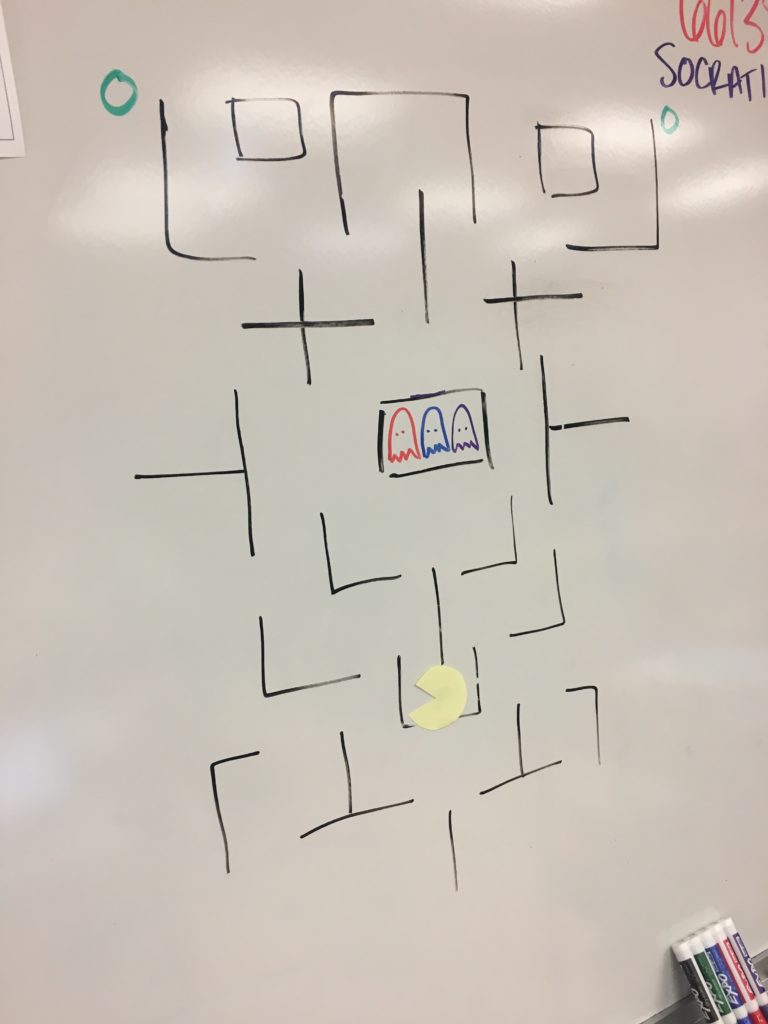In the middle of a day committed to visiting math classes at one of our 8 comprehensive high schools, I realized that I simply couldn’t do it any longer. I couldn’t spend the day watching someone else teach. Regardless of the quality of the lesson, there were things I wanted to try. There were risks I wanted to take. There were opportunities being missed, and I couldn’t afford to keep missing them.
So, during one of the classes, my partner-in-crime math coach, Paula, and I talked about it.
What do you think of this: instead of going in to watch others teach, we offer to give someone the day off and teach their entire schedule? We prep the lesson, print the handouts, design and deliver everything from start to finish.
Ah, yeah, I like that. Oh, and we can get their feedback to keep them in on the process, and to let them see how we envision the lesson going. I’m in!
With that, we packed up our stuff and got right to work, emailing the next group of teachers we were supposed to visit. Rather than visit, we want to give you the day off!!! Sounds great, doesn’t it?!
It’s actually very uncomfortable to give up control of your class for the day, and we respect the teachers’ feelings on this, holding no judgment over those who opt not to partake. But those who do… oh, they’re in for a ride. I sent the request out to our first site and immediately received a response from a 2nd-year teacher, among others. He is in his second year and already opening his door. This is big and I don’t want to lose sight of it; we’ll bring it back up near the end.
Once I found out who I’d be giving the day off, I needed to know content, what was coming before it, and what objectives he had for his students on that day. This was good because it caused him to reflect on the goals and objectives, rather than getting stuck into a rhythm of just teaching what is next. It’s nothing I’m blaming anyone for; it’s tough to be engaged in prepping that far in advance on a regular basis. What seemed like a day off was really a chance to do a demo lesson and model some different strategies in a not-so-sneaky disguise.
The goal was to have students understand and apply geometric rotations about the origin.
Great, I can do something with that.
Me: “Is there anything you’d like to see–or not see–in particular?”
Him: “I feel like I’m stuck in my comfort zone of powerpoints, desmos, peardeck, and worksheets.”
Perfect… not. There go two of the things I was hoping for. Once Desmos and Peardeck were off the table, I needed to find another way to introduce rotations that would still be engaging. With that, I turned to the best place I knew: the #MTBoS Search Engine and wasn’t disappointed. Using some of the ideas discussed in The Classroom Chef, I got into the lesson prep and settled on this:
The intro video would be Robert Kaplinsky’s Ms. Pac Man and the follow-up would be the video with only the translations.
Next, the students were tasked with helping me move Ms. Pac Man from the start to where the video ended. It was hilarious because every single class gave me only the translations, which worked perfectly because we could discuss the need for rotations.
It was frustrating and empowering all at once because the students felt the need for more than just translations in their toolbox of transformations.
Once we built up the demand as a class, I moved them to patty paper and a handout from Dane Ehlert:
I was surprised when it looked like, through my formative evaluation, every single kid in the class was rocking it. Patty paper worked, and conversations were rich. The patty paper was a major hit, with kids using it to visualize the rotations and begin forming their version of the rule for rotating a point about a center. It was so much fun to see/hear/witness!
Towards the end of the day, I asked the teacher if he wanted to take the last period. After all, he got to watch me do my thing for 5 periods, and if I were him, I would want to try some of the strategies I just saw. He ended up saying yes, and his reflection was very telling:
“After watching you, I thought I could do it, but you made it look much easier. You knew where to take the conversations and what the transitions were. I need to practice this more.”
Going back to the beginning where I said it was big for him to let me in, it was even bigger to take on the last class and teach it in a way that may not have been his style. This second year teacher stepped up, took a risk, and stayed out of his comfort zone for an entire period, trying teacher moves and strategies that he hadn’t practiced with someone in the room. I applaud that for sure, and it seemed like his students responded well, too.
One thing I can say is that I was exhausted after the final bell. Teaching 6 high school classes with no prep period, preparing a lesson you haven’t taught in years without any of the tools you’ve grown accustomed to using, being explicit about particular teacher moves, and building relationships with 210 new students in a day had me drained.
I wouldn’t have it any other way.
Happy “Eat The Blinking Ghosts” Fishing

